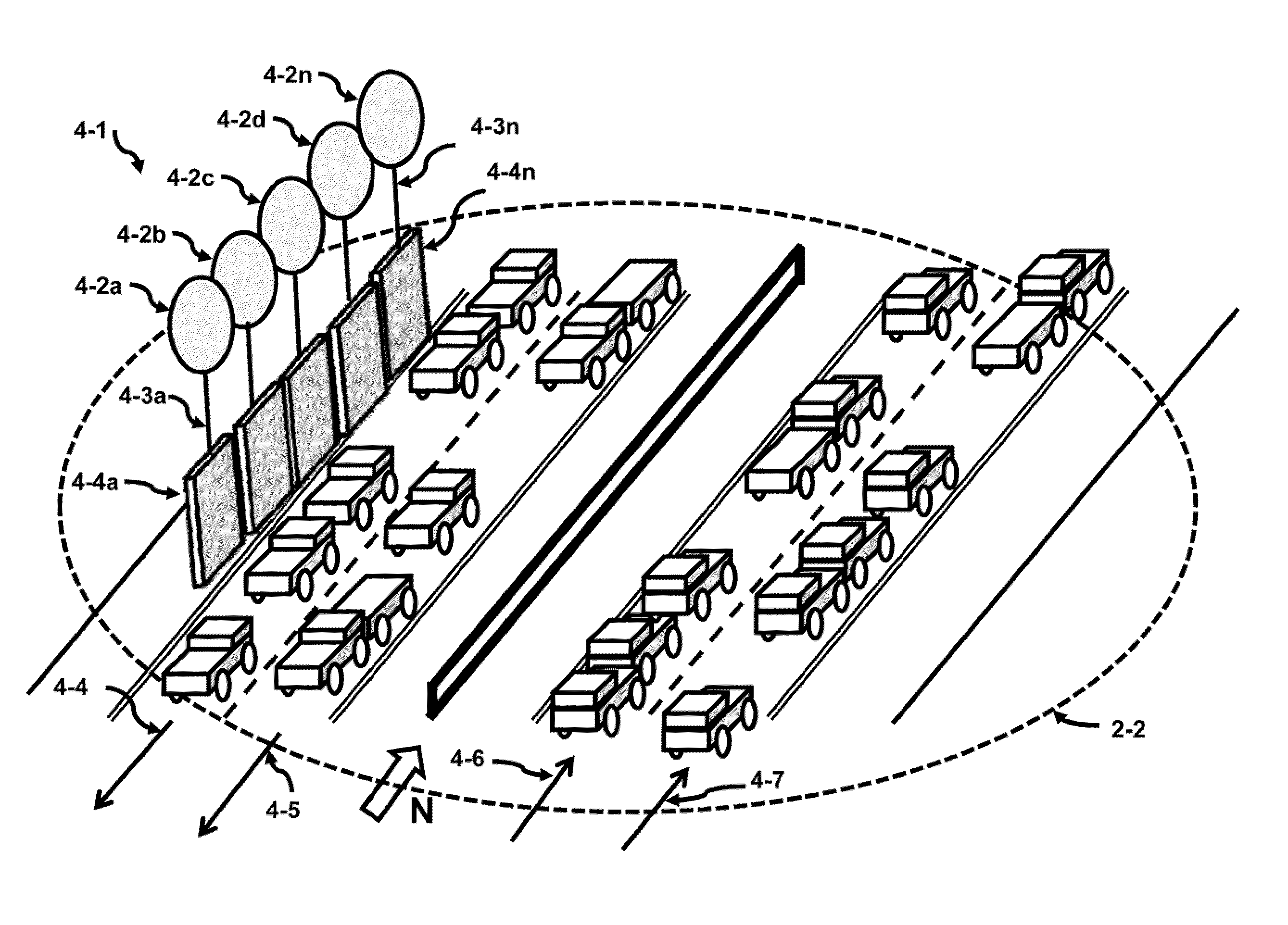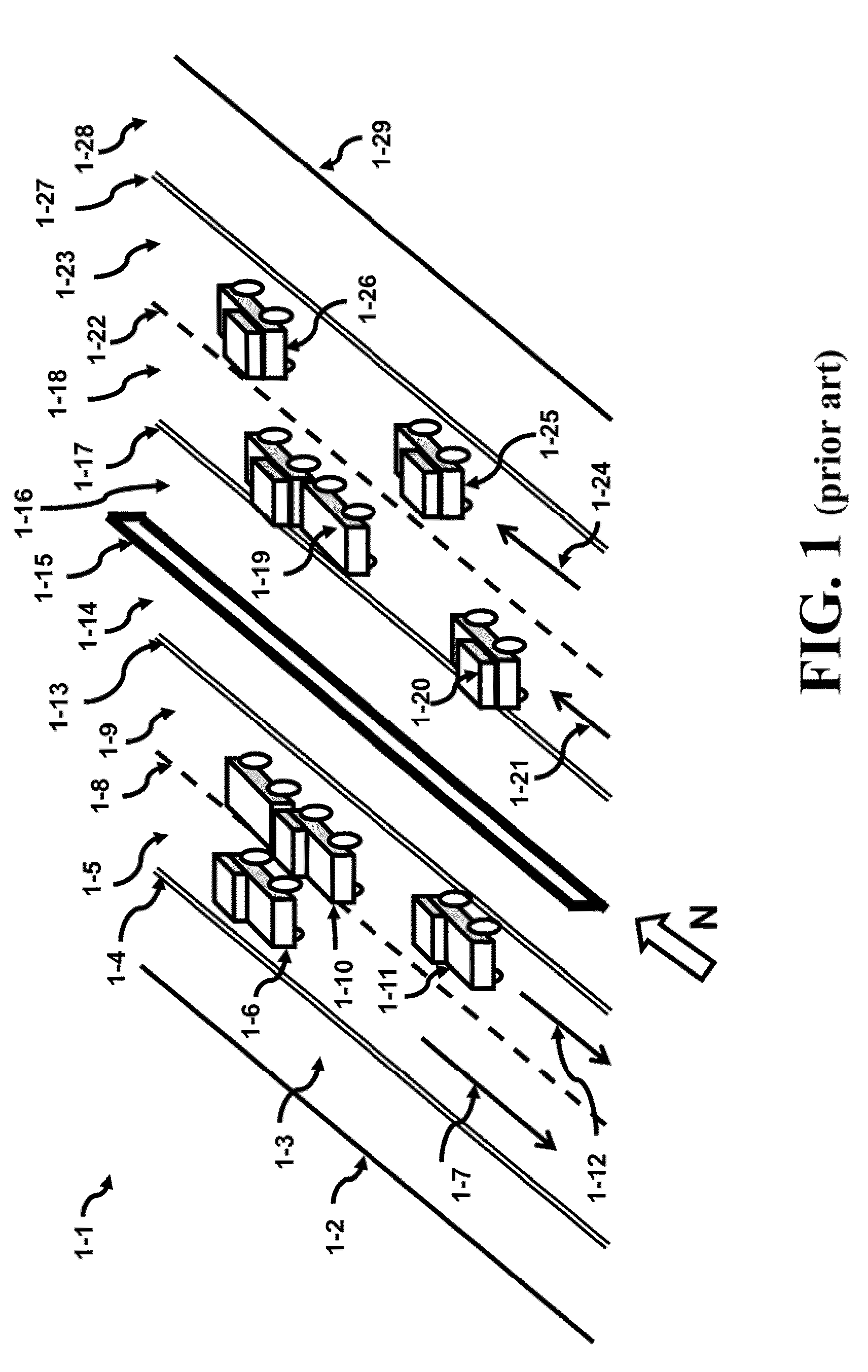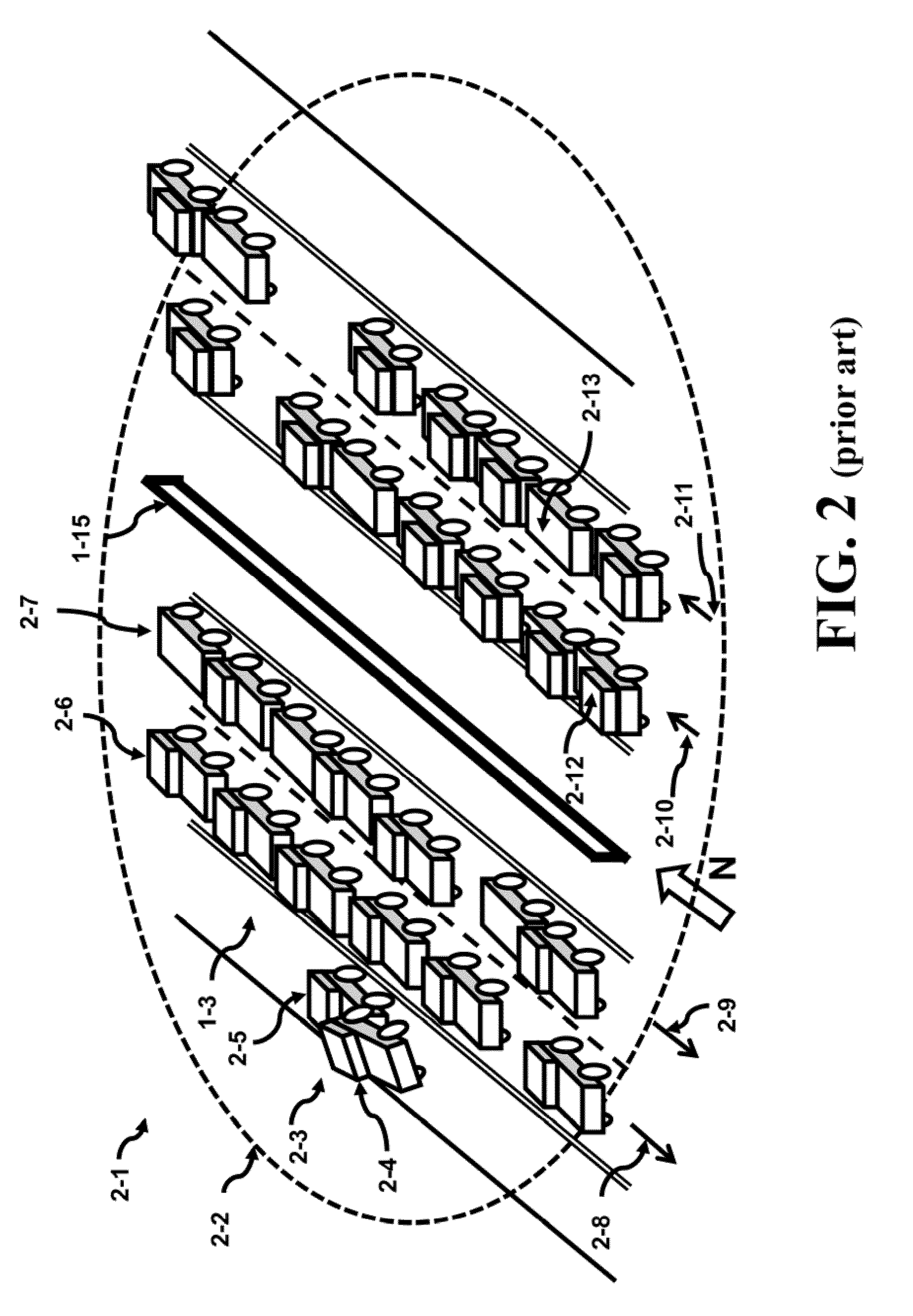Method and apparatus for reducing and controlling highway congestion to save on fuel costs
a technology of highway congestion and fuel cost, applied in the direction of roads, instruments, traffic signals, etc., can solve the problems of drivers not being able to see disturbance, reduce the reward of rubbernecking, reduce the waste of fuel waiting in long traffic lines, and reduce the flow of congested traffic
- Summary
- Abstract
- Description
- Claims
- Application Information
AI Technical Summary
Benefits of technology
Problems solved by technology
Method used
Image
Examples
Embodiment Construction
[0035]FIG. 1 illustrates a view of a typical highway or interstate 1-1. The highway is bounded by 1-2 and 1-29 which defines the paved region of the highway. This highway 1-1 stretches from North to South as shown by the arrow. The highway has four paved lanes 1-16, 1-18, 1-23 and 1-28 heading North and has four paved lanes 1-3, 1-5, 1-9 and 1-14 heading South. The North and South directions are separated by the concrete barrier 1-15. Each of the two outer lanes of the North and South directions serve as shoulders. The inner shoulders of the North and South directions are 1-16 and 1-14, respectively. The outer shoulders the North and South directions are 1-28 and 1-3, respectively. The active portion of the highway comprises lanes 1-18 and 1-23 traveling North and the lanes 1-5 and 1-9 traveling South.
[0036]The various lanes are separated by barriers, markings, depressions, or lines for demarcation purposes. For instance, the lanes that are traveling South 1-3, 1-5, 1-9 and 1-14 are...
PUM
 Login to View More
Login to View More Abstract
Description
Claims
Application Information
 Login to View More
Login to View More - R&D
- Intellectual Property
- Life Sciences
- Materials
- Tech Scout
- Unparalleled Data Quality
- Higher Quality Content
- 60% Fewer Hallucinations
Browse by: Latest US Patents, China's latest patents, Technical Efficacy Thesaurus, Application Domain, Technology Topic, Popular Technical Reports.
© 2025 PatSnap. All rights reserved.Legal|Privacy policy|Modern Slavery Act Transparency Statement|Sitemap|About US| Contact US: help@patsnap.com



